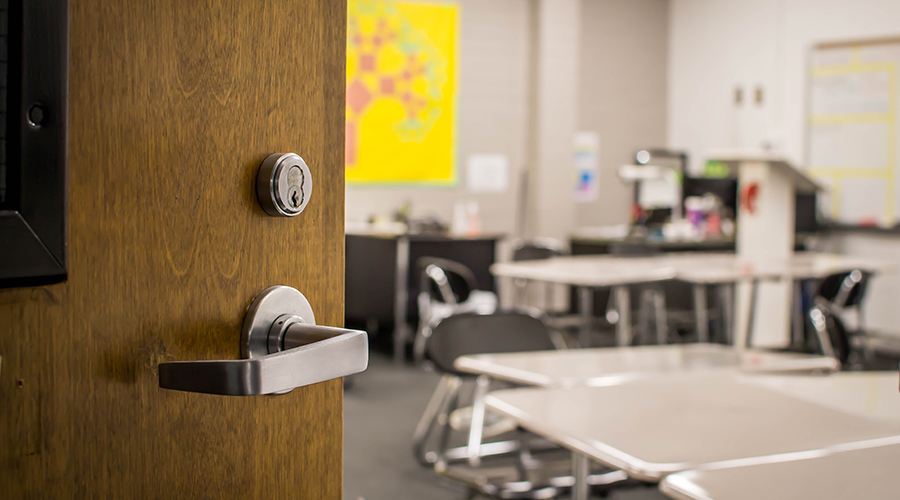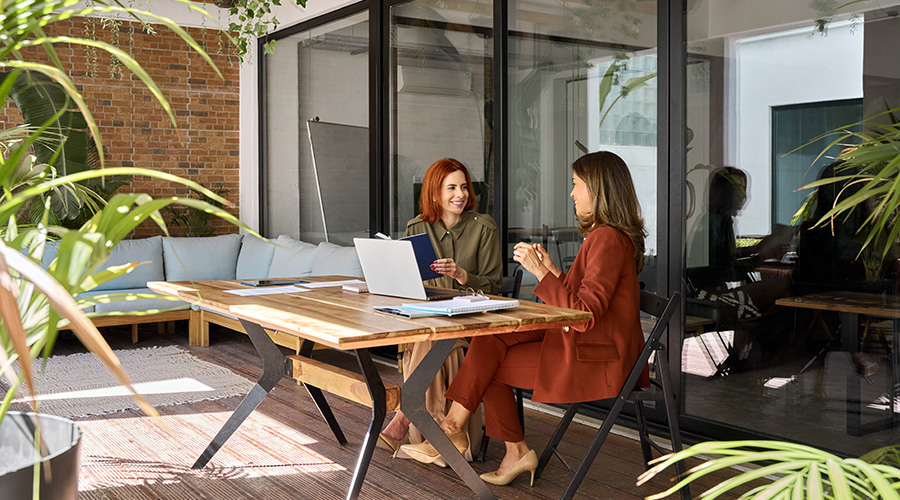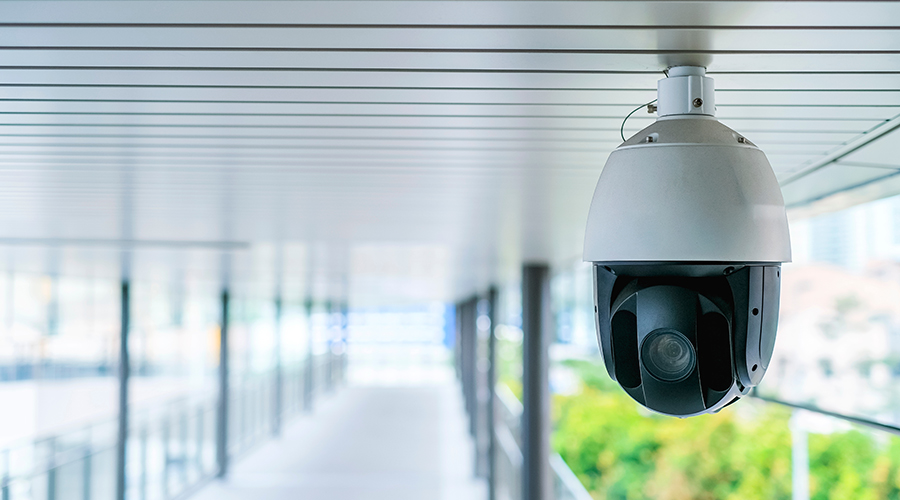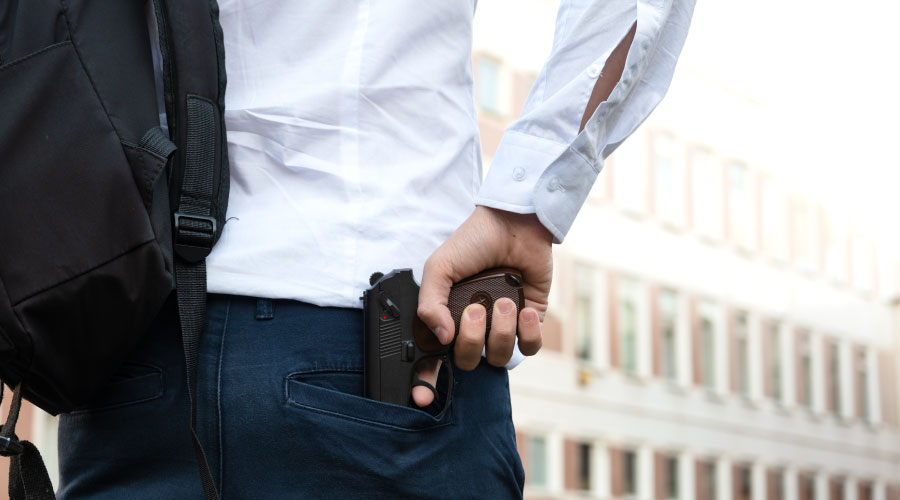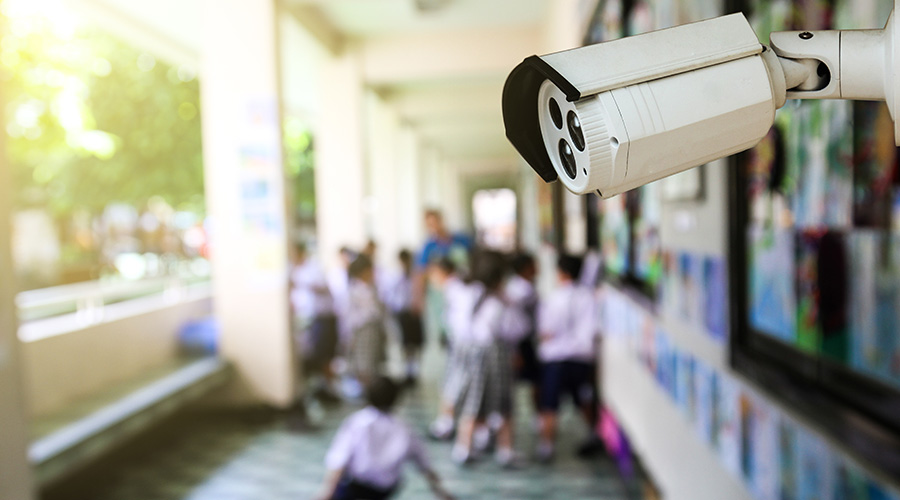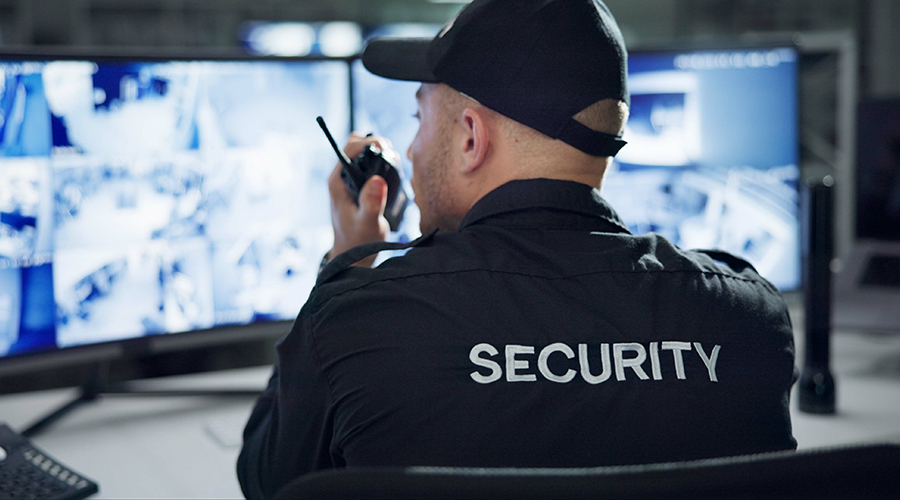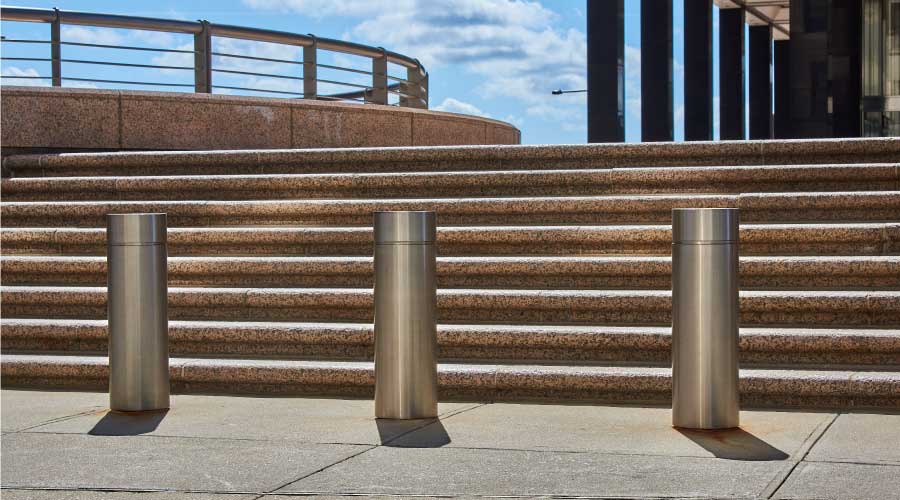Visitor Management Strategies to Keep Building Occupants Safe
Consider these innovative technologies to help keep building occupants and visitors safe.
With rising fears of unauthorized access, lingering visitors, and the looming threat of active shooter situations, institutional and commercial buildings are stepping up security measures.
The Azusa Unified School District in California is leading the charge with an innovative blend of technology designed to protect its 740 teachers and 7,000 students.
When Manuel Sanchez took over as Azusa technology director nearly four years ago, he inherited a fragmented security system spread across the district’s 13 school buildings.
He quickly set out to integrate and upgrade the district’s security infrastructure. The result is a state-of-the-art system that includes 410 security cameras, a cloud-based access control and visitor management system, and a mass notification system that can lock down schools in seconds.
“The cameras give me visibility into what’s happening and insight into who is accessing what, when and where,” he says.
The visitor management system helps identify visitors and lock down schools in an emergency. Every guest accesses an iPad kiosk at each school’s entrance to check in and a notification is sent to the office.
The system uses the person’s ID to run a background check against various criminal databases, sex offender registries and the district’s Persons of Interest list.
“If the visitor has a criminal record or is prohibited from entering the school, the system rejects their entry and alerts security,” says Zachary Palmquist, project manager from Safe and Sound Security, the systems integrator and installer for the project.
The new mass notification system helps initiate a lockdown or earthquake or fire drill in seconds.
“We just enter a code on classroom phones to lock down the school and notify everyone of the emergency,” Sanchez says. “We installed IP-based clocks and integrated speakers that can send messages throughout the school. This allows us to respond quickly to any threats, especially from the outside. It’s our duty to ensure the safety of our students and staff and to secure our facilities.”
While technology plays a significant role, Sanchez says that it complements rather than replaces human security.
“We still have people that do patrol,” he says. “We just integrated the technology so that we can contact them faster and get a faster response. Technology does not replace people. It just makes response faster.”
Integrate security systems
John Acosta, a security system consultant and designer with Henderson Engineers, recommends integrating access control with video surveillance systems.
“All too often, these systems were installed over time, and many are proprietary, so they don’t play well with others,” he says. “But in my opinion, any door that has a card reader on it, but does not have a camera pointed at the door, makes little sense. Integration is essential.”
Without a unified system, surveillance cameras may not support access control systems during critical moments. If an intruder attempts to breach a facility, surveillance cameras alone may not be enough to alert security personnel in real time. It’s easy for security personnel to miss a key event when monitoring many video feeds at once, Acosta says.
When video surveillance is integrated with access control, unauthorized access triggers an audible alarm and displays the associated camera footage so personnel can respond swiftly.
Institutional and commercial buildings can also consider cameras with analytics and artificial intelligence (AI) capabilities, along with high-quality video management software.
AI camera systems can analyze video footage in real-time, detecting and identifying potential threats. These systems can distinguish between humans, vehicles, and other objects, minimizing false alarms. When connected to access control and cloud platforms, AI-powered security cameras deliver smart alerts, automate responses, and provide security personnel with valuable insights.
Cameras with edge-based analytics can identify and sort individuals by unique characteristics like clothing, gender, and backpacks or bags. For example, school officials can use the system to search video footage to find anyone dressed in a striped shirt and blue jeans. Once found, they can track the individual as he or she moves throughout the building.
These systems also can identify and monitor persons of interest. The process is simple: upload their faces and receive instant alerts whenever the individual is captured on camera, according to Palmquist.
“If a person of interest shows up at an entrance, the system could alert someone to their presence,” he says. “The analytics could also be tied into other security systems, including access control or intrusion detection.”
Timm shares there are also analytics that let security staff know if someone has a weapon.
“Soon artificial intelligence will be able to detect a weapon and lock down buildings automatically,” he predicts. “Some schools are already experimenting with these solutions.”
However, with visual weapons detection cameras can struggle to actually see the weapon, Acosta says. If it cannot be seen, the camera will miss it.
Some cameras can also detect gunshots and send alerts when shots are fired. Palmquist shares these systems allow users to write rules that lock down the school automatically when shots are detected.
Electronic lockdown is possible if the building’s access control systems connect to electrified corridors and classroom doors. However, Timm admits this can be an expensive retrofit for older buildings. An alternative is indicator locks that visually confirm if a lock is engaged.
“Generally, these solutions will be less expensive than a fully electronic solution,” he says.
He also advises having a single, well-marked entrance where visitors have to hit a video intercom button to enter a secure vestibule. Visitors must show ID and state their purpose for visiting to access secure zones.
“Visitors would present their photo ID to a scanner, which would check sex offender databases and other manual inputs, such as a domestic issue where the parent isn’t allowed access to their child,” Timm says.
Ronnie Wendt is a freelance writer based in Minocqua, Wisconsin.
Related Topics:






